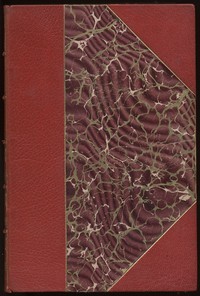The Monastery by Walter Scott (free novels to read .txt) 📖

- Author: Walter Scott
Book online «The Monastery by Walter Scott (free novels to read .txt) 📖». Author Walter Scott
Our reader is doubtless impatient, and we must own, with John Bunyan,
We have too long detain'd him in the porch, And kept him from the sunshine with a torch.Adieu, therefore, my dear Captain—remember me respectfully to the parson, the schoolmaster, and the bailie, and all friends of the happy club in the village of Kennaquhair. I have never seen, and never shall see, one of their faces; and notwithstanding, I believe that as yet I am better acquainted with them than any other man who lives.—I shall soon introduce you to my jocund friend, Mr. John Ballantyne of Trinity Grove, whom you will find warm from his match at single-stick with a brother Publisher. {Footnote: In consequence of the pseudo Tales of My Landlord printed in London, as already mentioned, the late Mr. John Ballantyne, the author's publisher, had a controversy with the interloping bibliopolist, each insisting that his Jedediah Cleishbotham was the real Simon Pure.} Peace to their differences! It is a wrathful trade, and the irritabile genus comprehends the bookselling as well as the book-writing species.—Once more adieu!
THE AUTHOR OF WAVERLEY.
Original
THE MONASTERY.
Chapter the First. O ay! the Monks, the Monks they did the mischief! Theirs all the grossness, all the superstition Of a most gross and superstitious age— May He be praised that sent the healthful tempest And scatter'd all these pestilential vapours! But that we owed them all to yonder Harlot Throned on the seven hills with her cup of gold, I will as soon believe, with kind Sir Roger, That old Moll White took wing with cat and broomstick, And raised the last night's thunder. OLD PLAY.
The village described in the Benedictine's manuscript by the name of Kennaquhair, bears the same Celtic termination which occurs in Traquhair, Caquhair, and other compounds. The learned Chalmers derives this word Quhair, from the winding course of a stream; a definition which coincides, in a remarkable degree, with the serpentine turns of the river Tweed near the village of which we speak. It has been long famous for the splendid Monastery of Saint Mary, founded by David the First of Scotland, in whose reign were formed, in the same county, the no less splendid establishments of Melrose, Jedburgh, and Kelso. The donations of land with which the King endowed these wealthy fraternities procured him from the Monkish historians the epithet of Saint, and from one of his impoverished descendants the splenetic censure, “that he had been a sore saint for the Crown.”
It seems probable, notwithstanding, that David, who was a wise as well as a pious monarch, was not moved solely by religious motives to those great acts of munificence to the church, but annexed political views to his pious generosity. His possessions in Northumberland and Cumberland became precarious after the loss of the Battle of the Standard; and since the comparatively fertile valley of Teviot-dale was likely to become the frontier of his kingdom, it is probable he wished to secure at least a part of these valuable possessions by placing them in the hands of the monks, whose property was for a long time respected, even amidst the rage of a frontier war. In this manner alone had the King some chance of ensuring protection and security to the cultivators of the soil; and, in fact, for several ages the possessions of these Abbeys were each a sort of Goshen, enjoying the calm light of peace and immunity, while the rest of the country, occupied by wild clans and marauding barons, was one dark scene of confusion, blood, and unremitted outrage.
But these immunities did not continue down to the union of the crowns. Long before that period the wars betwixt England and Scotland had lost their original character of international hostilities, and had become on the part of the English, a struggle for subjugation, on that of the Scots a desperate and infuriated defence of their liberties. This introduced on both sides a degree of fury and animosity unknown to the earlier period of their history; and as religious scruples soon gave way to national hatred spurred by a love of plunder, the patrimony of the Church was no longer sacred from incursions on either side. Still, however, the tenants and vassals of the great Abbeys had many advantages over those of the lay barons, who were harassed by constant military duty, until they became desperate, and lost all relish for the arts of peace. The vassals of the church, on the other hand, were only liable to be called to arms on general occasions, and at other times were permitted in comparative quiet to possess their farms and feus. {Footnote: Small possessions conferred upon vassals and their heirs, held for a small quit-rent, or a moderate proportion of the produce. This was a favourite manner, by which the churchmen peopled the patrimony of their convents; and many descendants of such feuars, as they are culled, are still to be found in possession of their family inheritances in the neighbourhood of the great Monasteries of Scotland.} They of course exhibited superior skill in every thing that related to the cultivation of the soil, and were therefore both wealthier and better informed than the military retainers of the restless chiefs and nobles in their neighbourhood.
The residence of these church vassals was usually in a small village or hamlet, where, for the sake of mutual aid and protection, some thirty or forty families dwelt together. This was called the Town, and the land belonging to the various families by whom the Town was inhabited, was called the Township. They usually possessed the land in common, though in various proportions, according to their several grants. The part of the Township properly arable, and kept as such continually under the plough, was called in-field. Here the use of quantities of manure supplied in some degree the exhaustion of the soil, and the feuars raised tolerable oats and bear, {Footnote: Or bigg, a kind of coarse barley.} usually sowed on alternate ridges, on which the labour of the whole community was bestowed without distinction, the produce being divided after harvest, agreeably to their respective interests.
There was, besides, out-field land, from which it was thought possible to extract a crop now and then, after which it was abandoned to the “skiey influences,” until the exhausted powers of vegetation were restored. These out-field spots were selected by any feuar at his own choice, amongst the sheep-walks and hills which were always annexed to the Township, to serve as pasturage to the community. The trouble of cultivating these patches of out-field, and the precarious chance that the crop would pay the labour, were considered as giving a right to any feuar, who chose to undertake the adventure, to the produce which might result from it.
There remained the pasturage of extensive moors, where the valleys often afforded good grass, and upon which the whole cattle belonging to the community fed indiscriminately during the summer, under the charge of the
 Have you ever thought about what fiction is? Probably, such a question may seem surprising: and so everything is clear. Every person throughout his life has to repeatedly create the works he needs for specific purposes - statements, autobiographies, dictations - using not gypsum or clay, not musical notes, not paints, but just a word. At the same time, almost every person will be very surprised if he is told that he thereby created a work of fiction, which is very different from visual art, music and sculpture making. However, everyone understands that a student's essay or dictation is fundamentally different from novels, short stories, news that are created by professional writers. In the works of professionals there is the most important difference - excogitation. But, oddly enough, in a school literature course, you don’t realize the full power of fiction. So using our website in your free time discover fiction for yourself.
Have you ever thought about what fiction is? Probably, such a question may seem surprising: and so everything is clear. Every person throughout his life has to repeatedly create the works he needs for specific purposes - statements, autobiographies, dictations - using not gypsum or clay, not musical notes, not paints, but just a word. At the same time, almost every person will be very surprised if he is told that he thereby created a work of fiction, which is very different from visual art, music and sculpture making. However, everyone understands that a student's essay or dictation is fundamentally different from novels, short stories, news that are created by professional writers. In the works of professionals there is the most important difference - excogitation. But, oddly enough, in a school literature course, you don’t realize the full power of fiction. So using our website in your free time discover fiction for yourself. 




Comments (0)